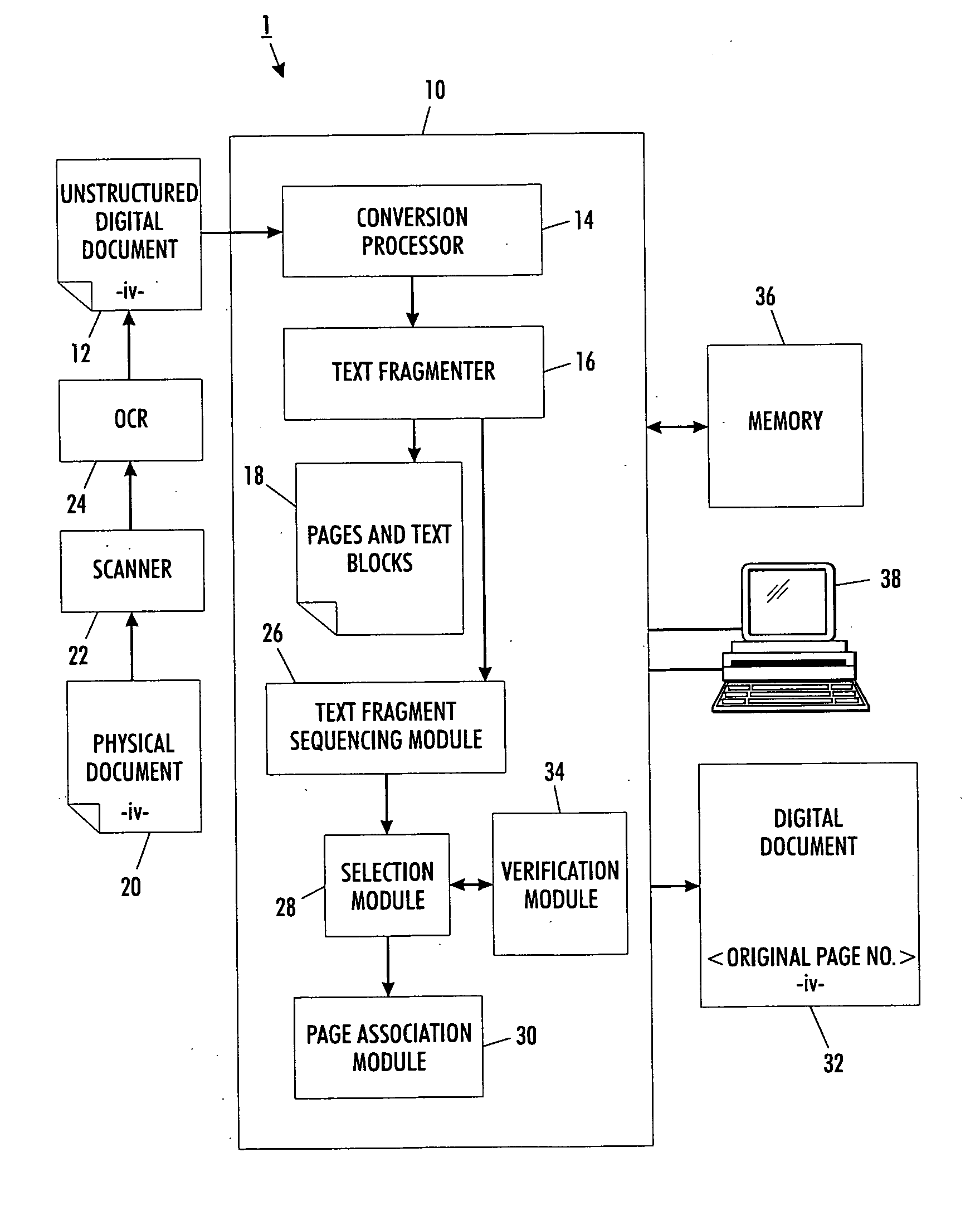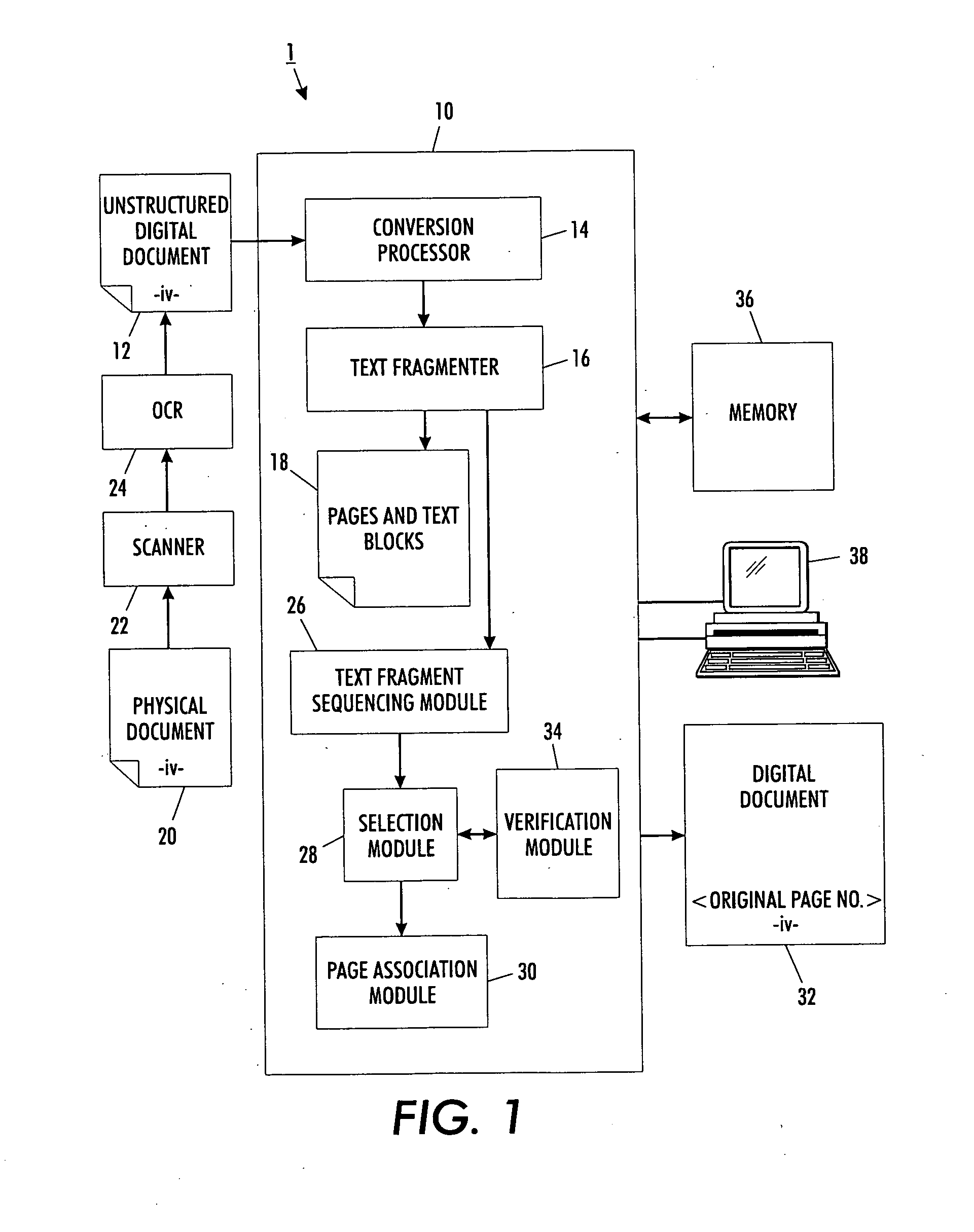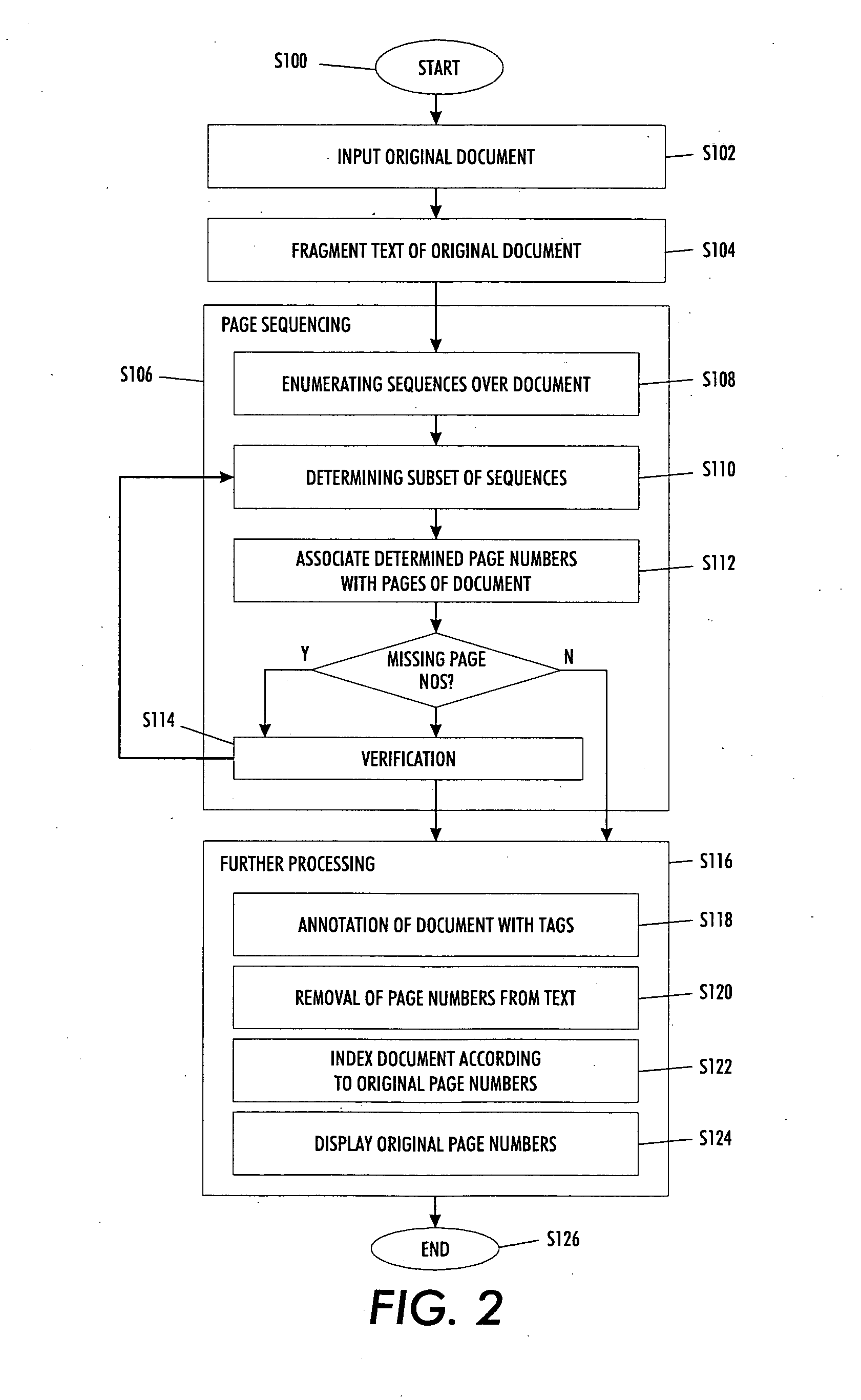Versatile page number detector
a detector and page number technology, applied in the field of information storage and processing arts, can solve the problems of wide variability of appearance, layout, and difficulty in reconstructing conventional constructs
- Summary
- Abstract
- Description
- Claims
- Application Information
AI Technical Summary
Benefits of technology
Problems solved by technology
Method used
Image
Examples
example 1
[0108]Table 1 shows the impact of the minimum density and margin size on the number of sequences identified, for a 65 page PDF document. When the margins (left, right, top, bottom) are each 50% of the respective page width and height (i.e., full page coverage), and the minimum density is set to 0%, the processing speed for the document is at 1 page / second (p / s). The processing speed increases to 32 p / s without any loss in quality (the 9 tests gave the same quality) when the minimum density is increased and the margin size is reduced. Table 1 shows the number of enumerated sequences and the processing speed as a function of the margin size and required density:
TABLE 1No. of enumerated sequences and speed in page / secondMarginMin density = 0%Min density = 25%Min density = 50%10% 31 sequences,24 sequences, 32 p / s22 sequences, 32 p / s16 p / s25% 76 sequences, 2 p / s39 sequences, 10 p / s25 sequences, 13 p / s50%282 sequences, 1 p / s82 sequences, 4 p / s65 sequences, 7 p / s
example 2
[0109]The exemplary method was evaluated on a set of 28 documents. Most of the documents were technical documents, a few were magazines or books, five were short, hand-made test cases and some were OCR-ed documents. The documents were collected on the Internet and, as is common, they displayed missing page numbers and various numbering schemes, or even no page number at all. The documents totaled 1600 pages.
[0110]The method was performed with the default parameters: density=30%, margin=20%, f=2.5 (f is the length factor). No verification step (step S114) was performed. After the method was applied, the assigned page numbers were manually checked for errors. TABLE 2 illustrates the results obtained.
TABLE 2% correctlyProcessing speedDocumentnumberedErrors per page(p / s) 192.1%(3 errors for 38 pages)38.0 20.0%2 errors for 2 pages∞ 3100.0%0 errors for 8 pages8.0 4100.0%0 errors for 40 pages1.0 5100.0%0 errors for 19 pages19.0 6100.0%0 errors for 4 pages p / s)4.0 7100.0%0 errors for 233 pa...
example 3
[0114]In this Example, positional information was used to verify identified page numbers (Step S114) using data from Example 2. In particular, detected page number positions identified at step S110 were clustered on a 2D space (using an agglomerative complete link clustering, separately performed on i) all odd pages, ii) even pages, iii) all pages). A set of clusters with a certain maximal internal distance was then determined and used to filter out terms enumerated in step S108 of the primary method. A Viterbi with f=0.5 was then used in a repeat of step S110. This approach was found to increase the overall accuracy of detection from 99.2% to 99.5%, with four fewer errors.
PUM
 Login to View More
Login to View More Abstract
Description
Claims
Application Information
 Login to View More
Login to View More - R&D
- Intellectual Property
- Life Sciences
- Materials
- Tech Scout
- Unparalleled Data Quality
- Higher Quality Content
- 60% Fewer Hallucinations
Browse by: Latest US Patents, China's latest patents, Technical Efficacy Thesaurus, Application Domain, Technology Topic, Popular Technical Reports.
© 2025 PatSnap. All rights reserved.Legal|Privacy policy|Modern Slavery Act Transparency Statement|Sitemap|About US| Contact US: help@patsnap.com



